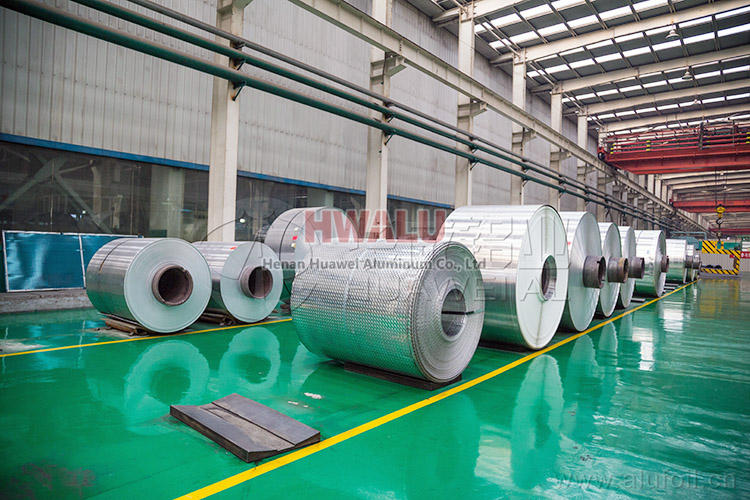(1) मैंगनीज: मैंगनीज में मुख्य मिश्रधातु तत्व है 3000 श्रृंखला एल्यूमीनियम, और इसकी सामग्री आम तौर पर की सीमा में होती है 1% प्रति 1.6%. मिश्र धातु में अच्छी ताकत होती है, प्लास्टिसिटी और प्रक्रिया प्रदर्शन. मैंगनीज और एल्युमिनियम MnAl . बना सकते हैं 6 चरण. The strength of the alloy increases with the increase of manganese content. जब(एम.एन.)>1.6%, मिश्र धातु की ताकत बढ़ जाती है. तथापि, बड़ी मात्रा में भंगुर यौगिक MnAl . के बनने के कारण 6 alloy is prone to cracking when deformed. As ω(एम.एन.) बढ़ती है, the recrystallization temperature of the alloy increases accordingly. Due to the large supercooling ability of this series of alloys, तेजी से शीतलन और क्रिस्टलीकरण के दौरान बड़ा इंट्राग्रेन्युलर अलगाव होता है. डेंड्राइट भाग में मैंगनीज की सांद्रता कम और किनारे वाले भाग में अधिक होती है. जब ठंडे प्रसंस्कृत उत्पाद में अलगाव के मामले में स्पष्ट मैंगनीज होता है, एनीलिंग के बाद मोटे क्रिस्टल के दाने आसानी से बन जाते हैं.
(2) लोहा: आयरन को MnAl6 में घोलकर बनाया जा सकता है (FeMn)अली 6 यौगिकों, thereby reducing the solubility of manganese in aluminum. Add ω(फ़े)= 0.4% ~ 0.7% मिश्र धातु के लिए, लेकिन सुनिश्चित करें कि(Fe+Mn)1.85% एनील्ड शीट के अनाज को प्रभावी ढंग से परिष्कृत कर सकते हैं, अन्यथा, बड़ी संख्या में मोटे गुच्छे (FeMn ) अली 6 यौगिक मिश्र धातु के यांत्रिक गुणों और प्रक्रिया के प्रदर्शन को काफी कम कर देगा.

(3) सिलिकॉन: सिलिकॉन एक हानिकारक अशुद्धता है. Silicon and manganese form a complex ternary phase T (अली 12 एम.एन. 3 और 2 ), जो लोहे को घोलकर a . भी बना सकता है (अली, फ़े, एम.एन., और) quaternary phase. If iron and silicon coexist in the alloy, ए (अली 12 फ़े 3 और 2) या β (अली 9 फ़े 2 और 2) पहले चरण का गठन किया जाएगा, destroying the beneficial effects of iron. इसलिए, मैं(और)<0.6% मिश्र धातु में नियंत्रित किया जाना चाहिए. Silicon can also reduce the solubility of manganese in aluminum and has a greater effect than iron. Iron and silicon can accelerate the decomposition process of manganese from supersaturated solid solution during thermal deformation, और कुछ यांत्रिक गुणों में भी सुधार कर सकते हैं.
(4) मैगनीशियम: मैग्नीशियम की एक छोटी मात्रा (मैं(मिलीग्राम)≈0.3%) can significantly refine the annealed grains of the alloy and slightly increase its tensile strength. But at the same time it will also damage the surface gloss of the annealed material. Magnesium can also be an alloying element in Al-Mg alloys. जोड़ना(मिलीग्राम)= 0.3% ~ 1.3% मिश्र धातु की ताकत में वृद्धि करेगा और बढ़ाव को कम करेगा (annealed राज्य). इसलिए, अल-एमजी-एमएन मिश्र धातुओं को विकसित किया गया है.
(5) तांबा: जब(साथ में)=0.05%~0.5% मिश्र धातु में, its tensile strength can be significantly improved. But containing a small amount of copper (मैं(साथ में)= 0.1%) मिश्र धातु के संक्षारण प्रतिरोध को कम करेगा, तो(साथ में)<0.2% मिश्र धातु में नियंत्रित किया जाना चाहिए.
(6) जस्ता: जब(Zn)<0.5%, मिश्र धातु के यांत्रिक गुणों और संक्षारण प्रतिरोध पर इसका कोई स्पष्ट प्रभाव नहीं है. मिश्र धातु के वेल्डिंग प्रदर्शन को ध्यान में रखते हुए, सीमा(Zn)<0.2%.
